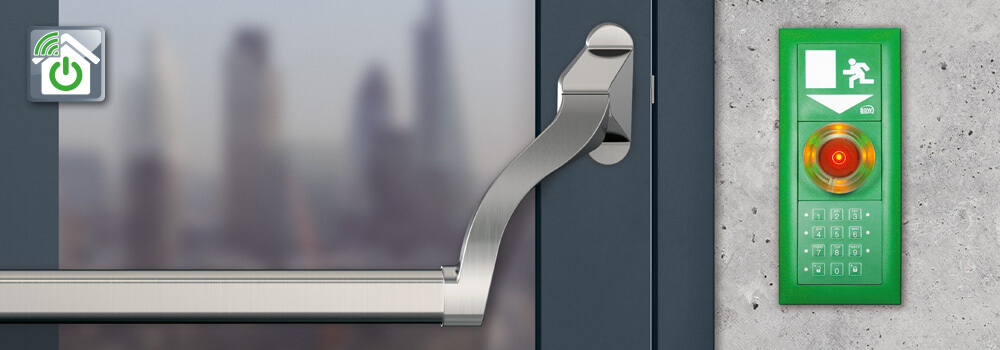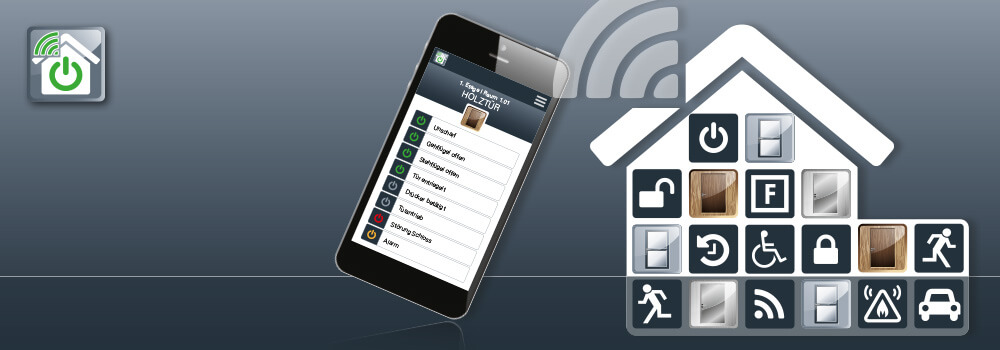Hardware meets electronics
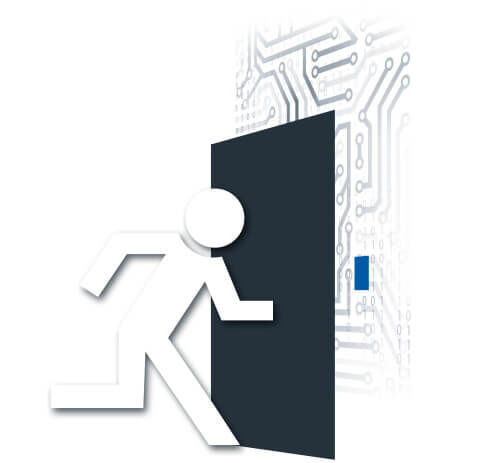
A door is a door is a door – not at all! While Gertrude Stein said famously that a rose is a rose is a rose, this by no means applies to doors. The doors in a property are highly individual! And hardly any other product in the wide world of architecture is currently experiencing such a revaluation in terms of its significance. Hardly any interface in the logistics of a building needs to be networked as much as a door.
A door is a piece of movable wall. It regulates access into and within a property. So what could be more obvious than integrating this access into the building management system? Flows of visitors are checked and regulated – and this in all situations, no matter whether in normal operation or in emergency plans.
A world of doors
We call this intelligent door management (ITM)
The urban world from above; a world full of intelligently managed doors. Hardware, mechatronics and software are combined in the building and fire alarm technology. They grant access or prevent it. They open doors and close them again. They create escape routes and secure fire prevention areas. They identify users through their fingerprints or card systems, they document access and report any unauthorised activity. They protect our belongings – yet make them safely accessible to authorised people. And finally they save lives.
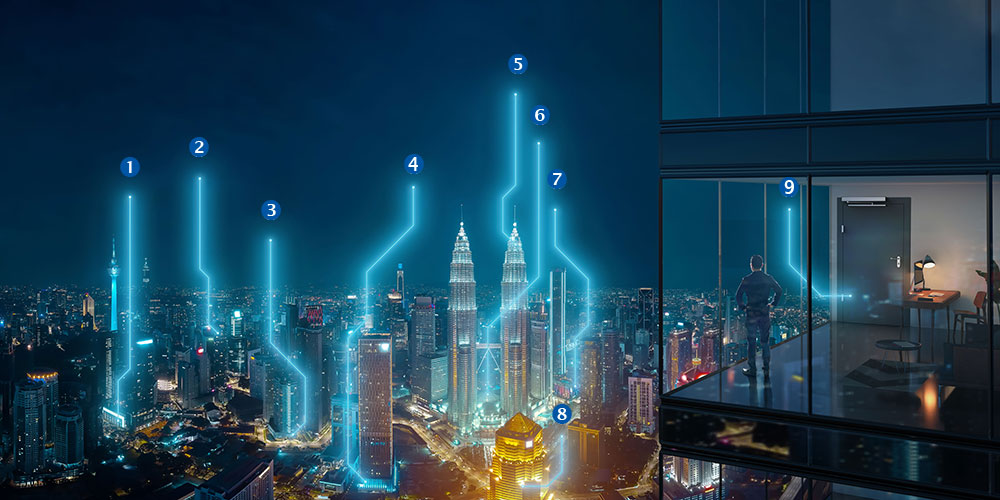
The future of planning – begins today
Architects and planners develop rooms, building and cities from their computers. Ever more complex planning generates ever more complex construction processes, where whole projects have to be broken down into every detail. Together with its partners, ECO Schulte makes a contribution towards keeping the world of hardware and software on doors both manageable and predictable. The future of planning is digital – and flexible.
ECO Schulte provides all the support and engineering services necessary for the planning and development of complex door systems. We make planning data available for the range of hardware and mechatronics for wood, steel and section doors. And, in case of any difficulty, our experts in technology and norms are on hand to help. What best complements good information is always perfect service.
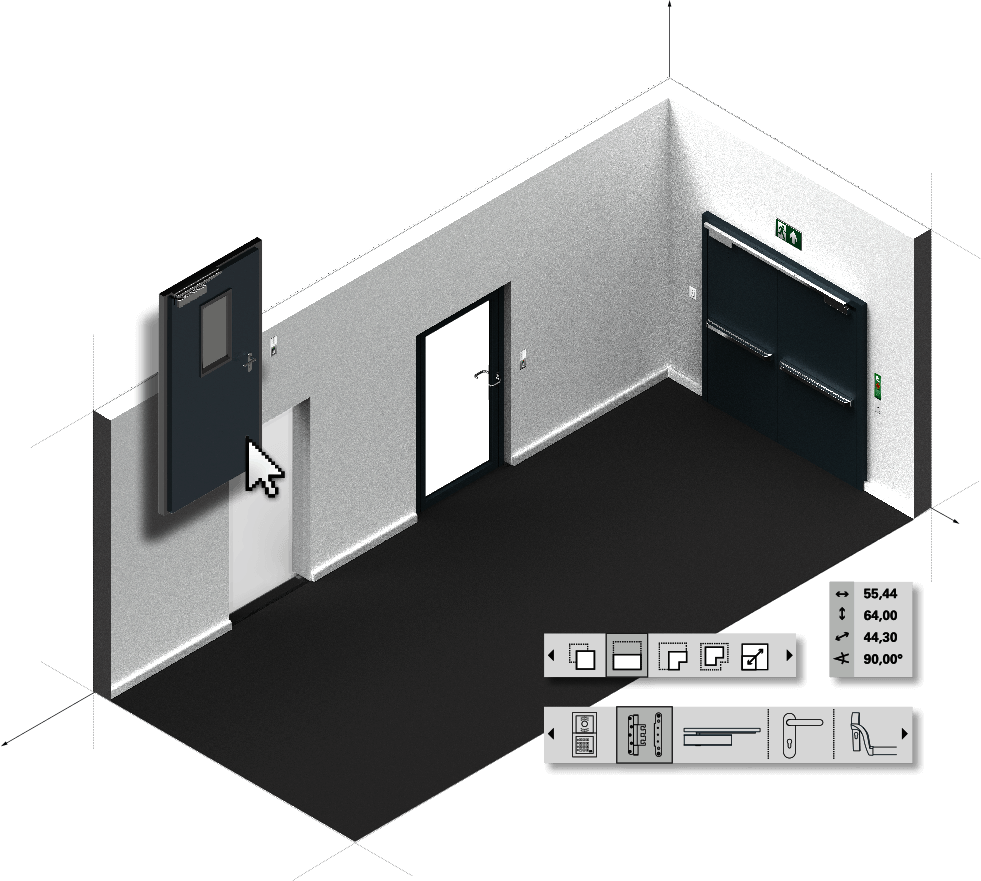
The fascination
of mechanics:

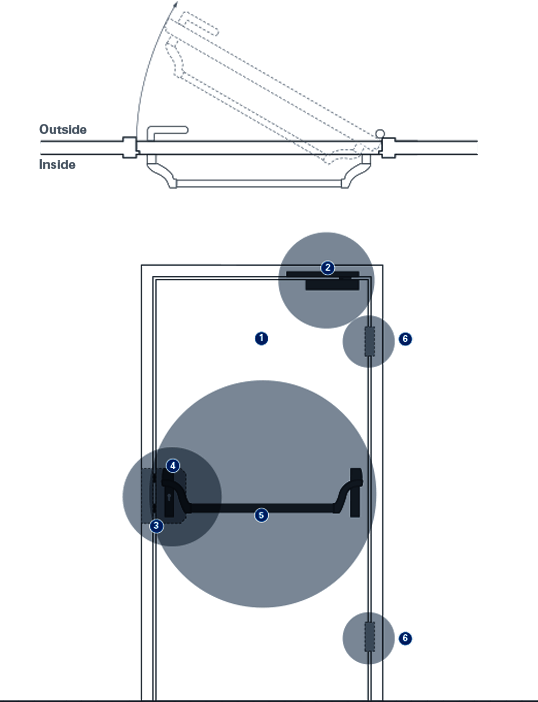
The fascination
of mechatronics:
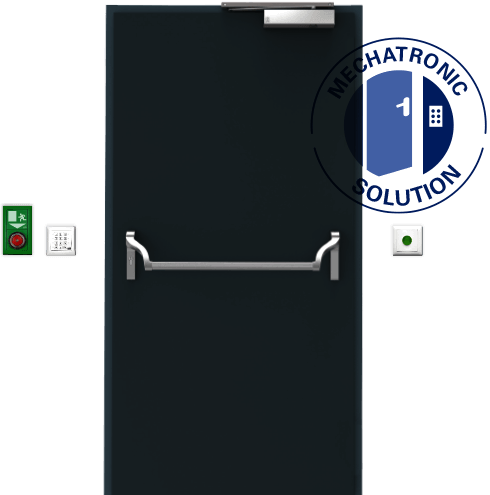
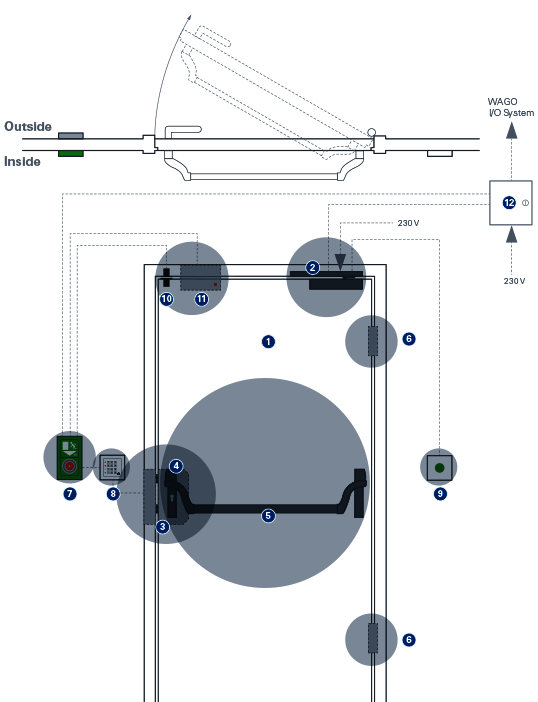
1Single door
2Door closer
3Panic lock
4Counter handle
5Panic bar
6Heavy-duty hinges
Door type
DIN Left door
Safety aspect
Suitable for emergency exits and escape routes
System options
Extendable system
Function description:
Entry
Is achieved through the engaged handle
or the key
Exit
Is achieved through the panic bar
Emergency/Escape route
The door can always be opened in emergency
by means of the panic bar
1Single door
2Door closer
3Panic lock
4Counter handle
5Panic bar
6Heavy-duty hinges
7Escape management terminal
8Code keypad
9Signal lamp
10Magnetic contact
11Magnetic clamp
12SPS control
Door type
DIN Left door
Safety aspect
Suitable for emergency exits and escape routes
System options
Extendable system
Function description:
Entry
Is achieved through the engaged handle or the key and/or the code keypad
Exit
Is achieved through the panic bar and the terminal cylinder
Emergency/Escape route
The door can always be opened in emergency by means of the panic bar
It works entirely without current
It is a bit like with clocks. As well as the electronic and digital ones, mechanical clock movements
are also still available. And not just due to the fascination of mechanical precision, far more because they do not require any current or radio signals to work safely and precisely.
The complexity of a single emergency exit door, or even a double emergency exit door, is a technical marvel, as it is purely mechanically operable and manageable – including any door coordination with double doors. This always has advantages when doors than have to operate independently when all other systems fail.
A secure escape route is always required when extreme situations threaten the people within the building. In cases of fire, smoke, earthquakes and toxic hazards, the doors with the green and white emergency exit symbols become absolute life-savers.
Electronics make the mechanics more convenient
Electronic functions make the doors and their use visible and controllable. Entire systems of doors in buildings and building complexes can be managed intelligently this way. There is an unalterable basic law that applies here, and that is that the mechanics create the foundation upon which the electronics are based. Without this foundation the door is not safe. Only by intelligently combining top-quality and standardised mechanics with functional electronics do we get genuine value for operators and users.
Mechatronic doors grant and report entry, can be combined and can interact with smoke and fire alarms, can be integrated into fire protection and security plans and, consequently, become the basis of safety-orientated building management.
Don't be afraid of EN 13637!
Pascal Wix on electronically controlled escape route concepts.
- New EN 13637 for electronically controlled emergency exits in the harmonisation phase
- EN standards at a glance for escape & rescue routes
- FTI Basic
- Three different technical variants of terminals for equipping emergency exits according to requirements
- EN 13637 – Electrically controlled emergency exit systems
- Slim and attractive terminal design
- Modular design ensures safe installation
Case study #1
A Shopping Centre
This single, timeless fire escape door cuts off a fire section here in a department store. These doors are little used and must remain closed on a day-to-day basis. This is ensured by means of a mechanical lock and a mechanical door closer. A panic bar in combination with a panic lock (tested according to the EN 1125 standard) enables the locked door to be opened from the inside in case of fire or with any necessary evacuation procedure.

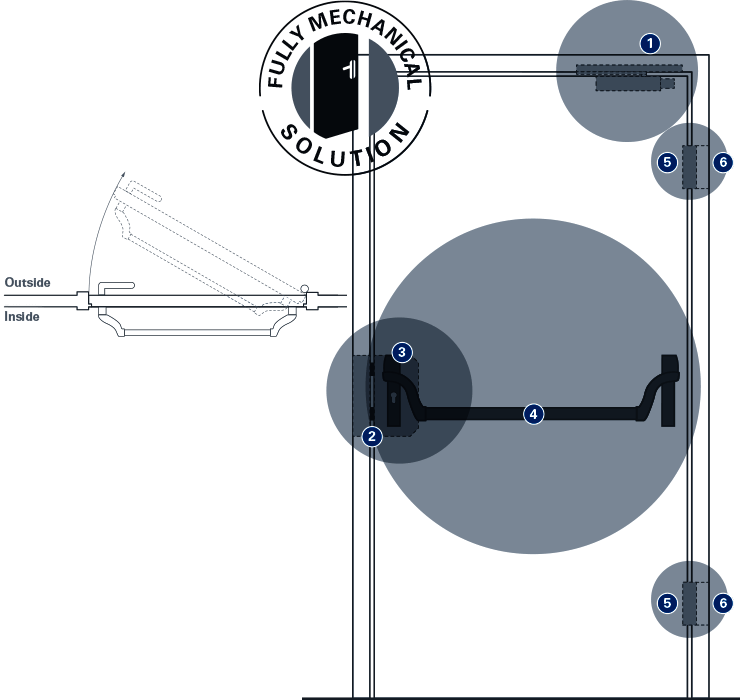
Legend:
11x
Concealed door closer
Multi-Genius

21x
Lock
GBS 92
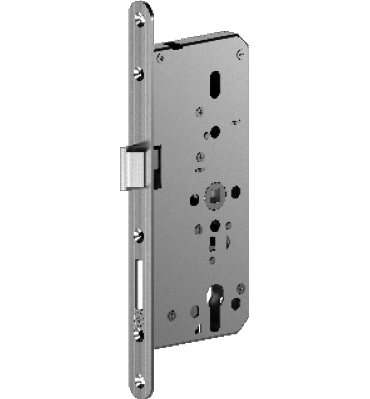
31x
Counter handle
D-110 short plate
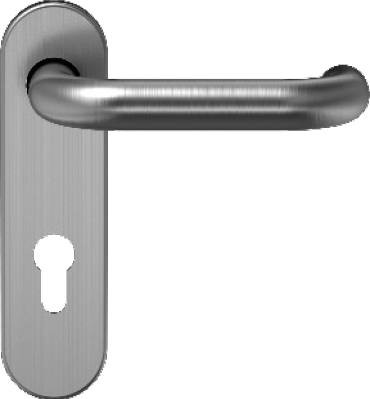
41x
Panic bar
EPN 900 IV

52x
Heavy-duty hinges
OBX 18

62x
Reception element
OBX-3011-3D
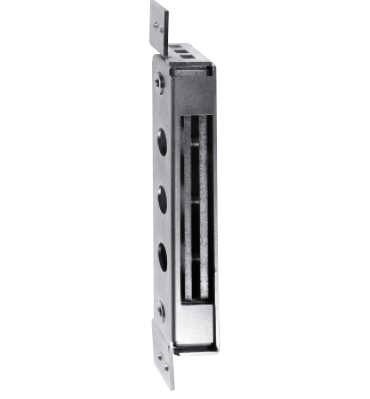
Door type
DIN Left door
Safety aspect
Suitable for emergency exits and escape routes
System options
Extendable system
Function description:
Entry
Is achieved through the engaged handle or the key
Exit
Is achieved through the panic bar
Emergency/Escape route
The door can always be opened in emergency
by means of the panic bar
Normen
EN 1125, EN 1154,
EN 1906, EN 1935,
EN 12209
Case study #2
Kindergarten
When kindergartens and schools are affected by catastrophes of any kind whatsoever, the pictures and shocking news are sent round the world. Kindergartens and schools are buildings where the next generation of a society learns its social skills. These facilities are subject to special protection – and, in terms of their construction, they must meet special demands with respect to safety issues. The „Safely out withECO!“ doctrine acquires a special significance here, as door facilities from ECO Schulte guarantee free escape routes at all times and under all circumstances. Purely mechanically and, in blackout situations, even with little strength and awkward levers.

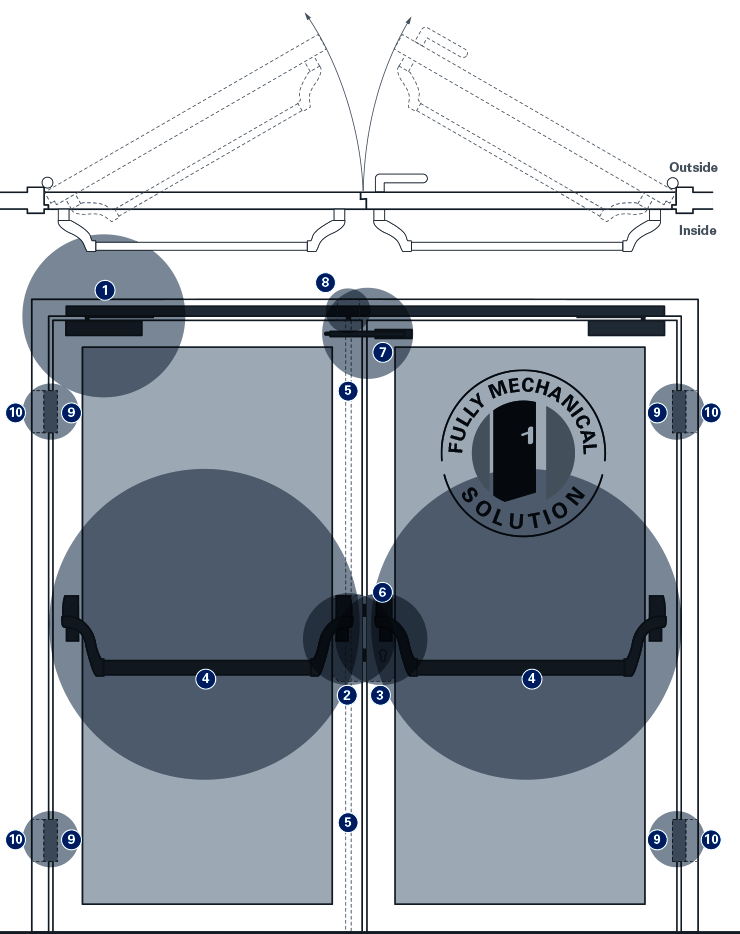
passive leaf
active leaf
Legend:
11x
Door closers and door coordinatior
TS-62 SR BG

21x
Counter lock
GBS 94
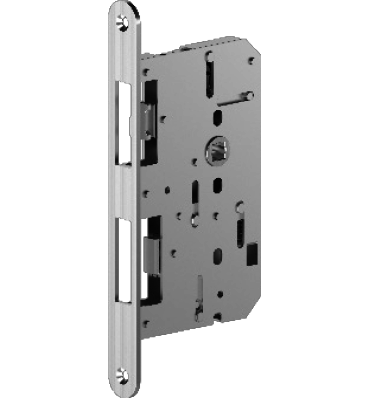
31x
Lock
GBS 93
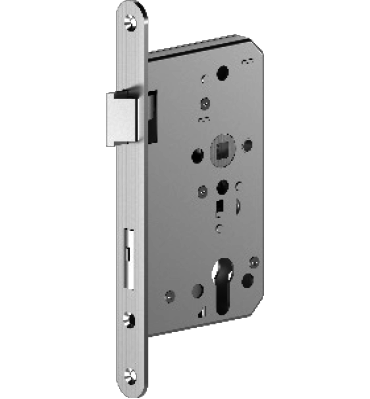
41x
Panic bar
EPN 950

51x
Accessory Shoot bolts
GBS 94

61x
Counter handle or latch
D-116 OVR III
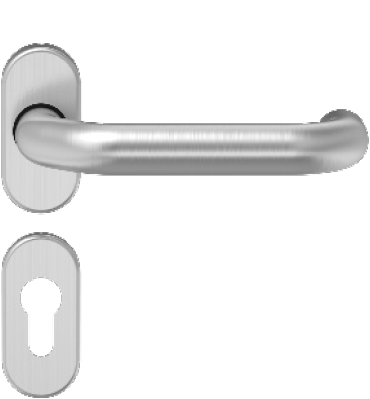
71x
Accessory
Accessory Panic flap MK Basis-2

81x
Accessory
Switch lock

94x
Heavy-duty hinges
OBX 18
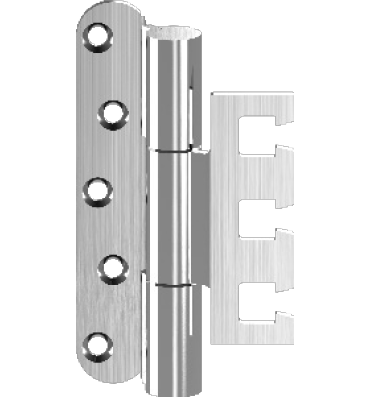
104x
Reception element
OBX-3011-3D
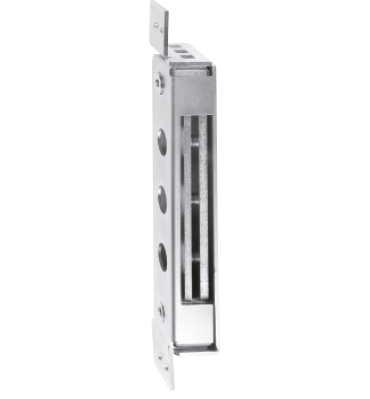
Door type
DIN Left door
Safety aspect
Suitable for emergency exits and escape routes
System options
Extendable system
Function description:
Entry
Is achieved through the engaged handle or the key
Exit
Is achieved through the panic bar
Emergency/Escape route
The door can always be opened in emergency by means of the panic bar
Normen
EN 1125, EN 1154,
EN 1158, EN 1906,
EN 1935, EN 12209
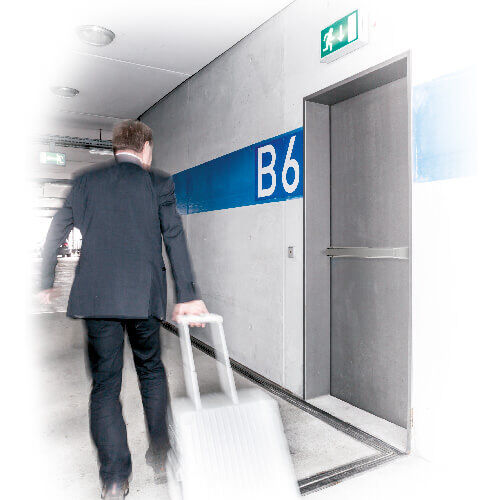
Case study #3
Underground car park
In this semi-public underground car park, which is typically found in a hotel, a fire protection door acts as a barrier between the car park and the hotel section. As arriving and departing guests carry suitcases and bags, a standard feature is automatic opening and locking of this door. A card reader or a code keypad allows various straightforward options for granting access. This can be time-controlled or needs-based. The openings can be documented electronically to show who has entered the building through this door. If the door is part of an escape routes system, then panic locks and/or panic bars can be integrated in it.
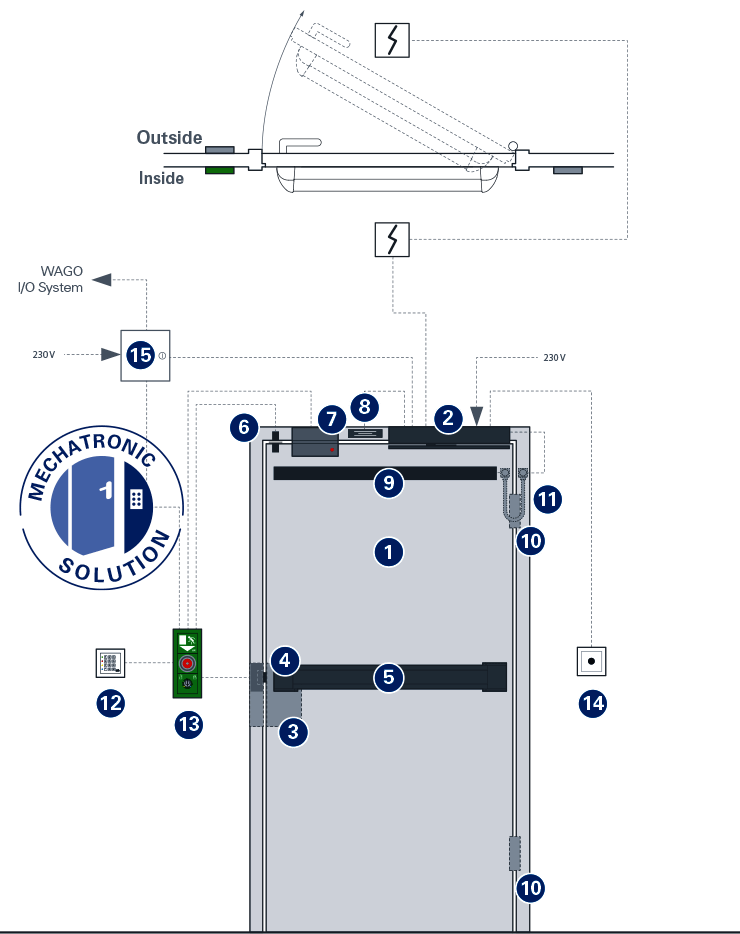
Legend:
1Single steel door
2Automatic drive
3Panic lock
4Counter handle
5Touch bar
6Magnetic contact
7Magnetic clamp
8Lintel-mounted smoke alarm
9Sensor stripe
10Heavy-duty hinges
11Cable connection
12Code keypad
13Escape management terminal
14Approach detector for automatic opening
15SPS control
Door type
DIN Left door, under surveillance
Safety aspect
Suitable for emergency exits and escape routes; Fire protection door
In cases of emergency, the door can be opened by the emergency button (sets off an alarm). The door is always accessible in case of fire.
Normen
EN 1125, EN 1906, EN 1935,
EN 12209, EN 13637, EN 16005

Case study #4
University Hospital
The doors to wards in hospitals are among the most demanding door systems. The hardware (fittings, locks, hinges and motor-driven openers and closers) has to move large volumes with the double profile door. The door is in constant movement in an occupied ward during the day. Beds, visitors, patients and care personnel are constantly moving in and out. A combination of electronics and hardware regulates access to the ward during the night. There are high demands on its panic and escape route properties because it must be assumed that, in the worst case, physically and mentally compromised people need to be evacuated. At the same time, the door also has fire protection tasks to fulfil and also serves as a barrier to keep the escape routes free of smoke.
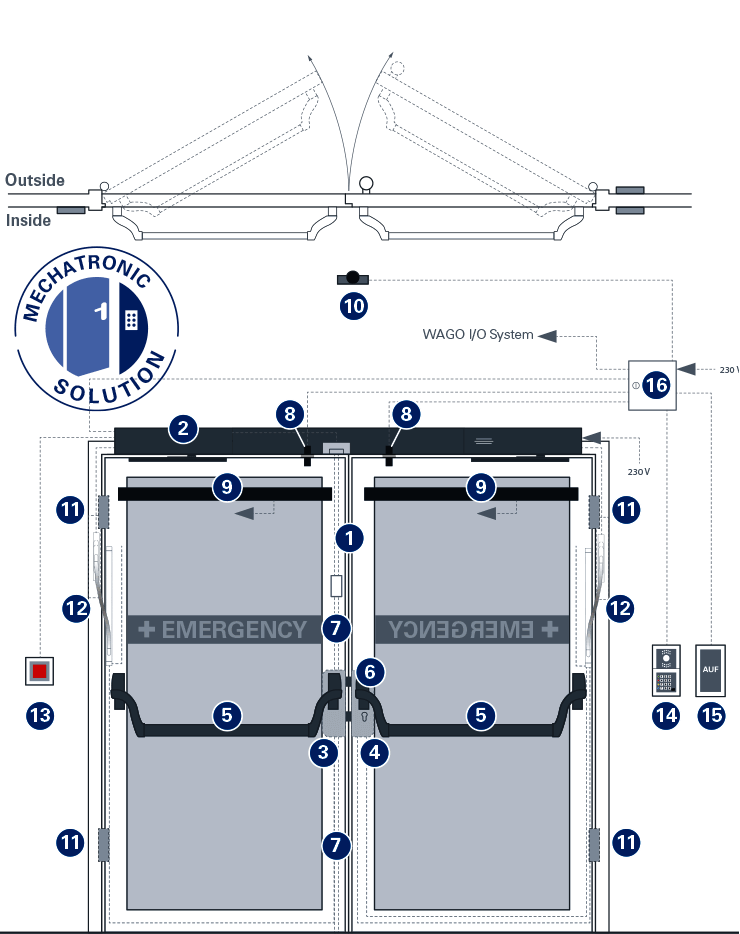
passive leaf
active leaf
Legend:
1Double profile door
2Automatic drive
3Counter lock with e-strike
4Profile frame with panic lock
5Panic bar
6Counter handle
7Shoot bolts
8Magnetic contact
9Sensor stripe
10Radar
11Heavy-duty hinges
12Cable connections
13 "Close door" button
14Code keypad/Reader
15Button with large surface area
16SPS control
Door type
DIN Left door
Door is monitored with a day alarm
Safety aspect
Suitable for emergency exits and escape routes;
Fire protection door
This door can always be opened with the panic bars (setting off an alarm in extreme situations).
Normen
EN 1125, EN 1906, EN 1935,
EN 12209, EN 16005
Intelligent Door Management
Two partners who ideally complement each other. ECOSchulte from Menden in North-Rhine Westphalia
and BSW SECURITY AG from Switzerland. Their expertise in clearly defined and they complement each other perfectly. ECO Schulte is the specialist for the hardware on the door. From handles and hinges, fittings, door closers and lock technology; the range works for all kinds of doors – profile doors, steel doors and wooden doors. BSW SECURITY then integrates the ECO Schulte hardware into the building process control and fire detection technology. The objective of this partnership of specialists is to integrate all the mechatronics and electronics to do with the doors – with open interfaces to the building process control system.
Intelligent Door Management (ITM) makes high demands
on both the mechanical and the electronic components. The planning for all parties involved in the construction process is just as demanding – no matter whether this is on the part of the contractors, the architects, the specialist planners for technical building equipment or the companies that carry out the work. As a system specialist for doors, this cooperation, based in Menden, is able to put together a complete, turnkey offer for any demanding door facilities. This can take account of all aspects including security, access control, escape routes and fire protection. ECO Schulte sees itself here as a system integrator – even for solutions involving different manufacturers. Any change of use of existing facilities are also possible here if, for example, existing components can be taken over.
Planners and contractors can expect a complete package of hardware, software and electronics as well as planning and service fromECOSchulte. And of course the guarantee that the system, as well as each individual component, conforms with the current standards.
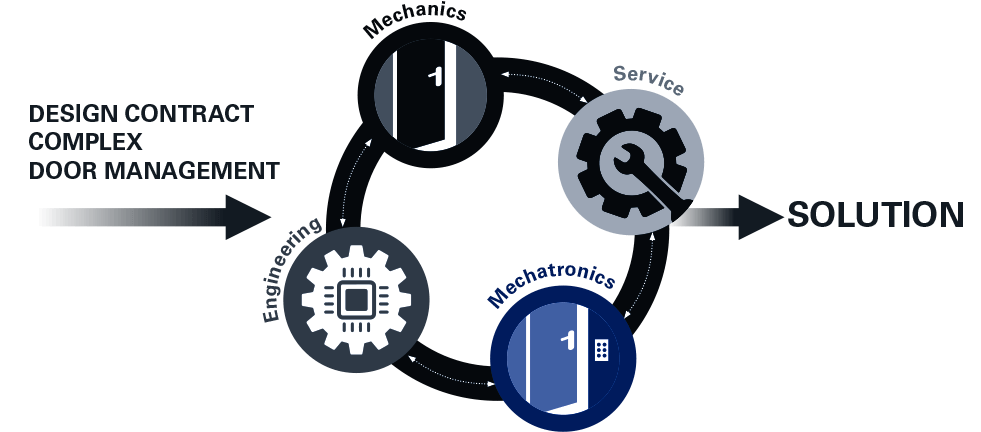
What does ITM stand for?
If you would like to find out more about ITM you can call up the image brochure through the zoom and scroll function directly in your browser or download it here.

Your direct contact to ITM
Are you making a specific enquiry? Or are you interested in more information? Then contact our sales team. Please use this contact form, telephone us or send us an email.
Tel. 02373 / 9276-0
export@eco-schulte.de
